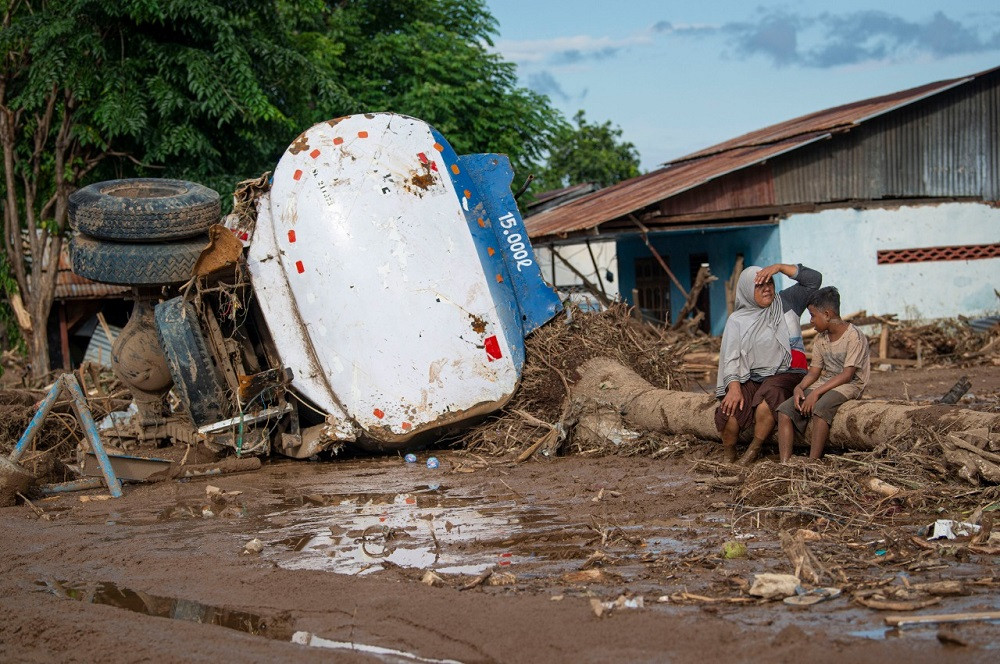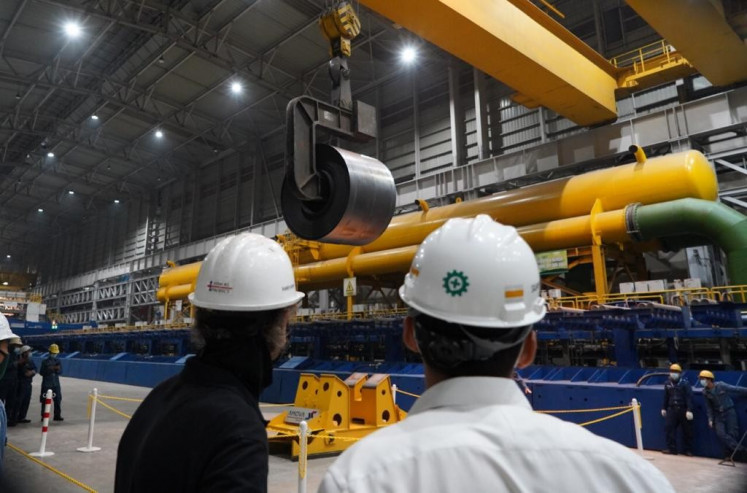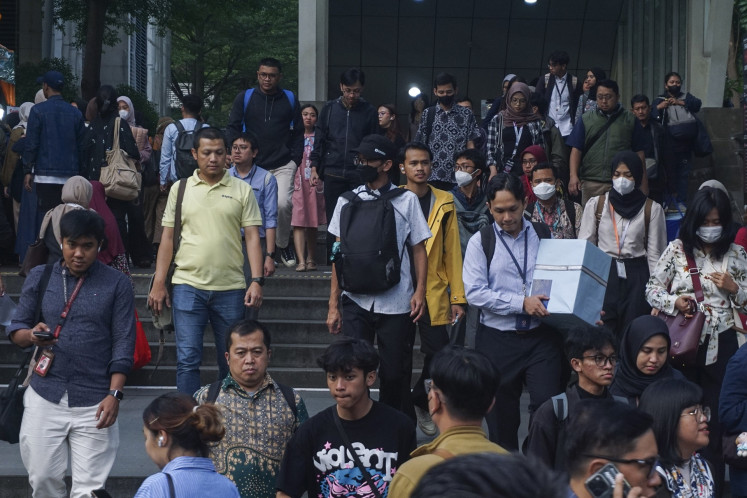Popular Reads
Top Results
Can't find what you're looking for?
View all search resultsPopular Reads
Top Results
Can't find what you're looking for?
View all search resultsIndonesia’s underinsurance is risky business
Currently, the claims process remains manual and cumbersome, resulting in slow payments to customers and high expenses for insurers.
Change text size
Gift Premium Articles
to Anyone
A
s Indonesia optimistically looks to recover from the scourge of COVID-19, the effects of recent spate of natural catastrophes highlight the potentially rocky road ahead for Southeast Asia’s most populous nation.
Recent flood disasters in Timor Leste and Indonesia, including Cyclone Seroja, the strongest tropical storm to hit the region in over a decade, have resulted in estimated damages of US$200-250 million, which does not yet factor in the widespread disruption and tragic loss of human lives. This comes as a blow to Indonesia, which is just starting to see the light at the end of the long COVID-19 tunnel. Going back further before COVID-19, there were larger disasters such as the seven-meter tsunami that took the Indonesian city of Palu by surprise on Sept. 28, 2018 following an earthquake nearby destroyed thousands of buildings and some 2,100 people were killed, with estimated losses to be $1.5 billion.
Over the years, periodic natural catastrophes of this scale have become an unfortunate part of life for many Indonesians, in part due to Indonesia’s proximity to the Pacific Ring of Fire, which is responsible for over 90 of the world’s earthquakes. The country has had to cope with the constant risk of floods, tsunamis, volcanic eruptions and, on a lesser scale, extremely wet or dry seasons, which can also ruin agriculture and fisheries, putting severe financial pressure on many poorer segments of rural Indonesia.
Estimates in 2018 have put Indonesia’s underinsurance gap, defined as the value of assets at risk and not being covered fully by insurance policies, at around $14.6 billion. This large figure highlights a vulnerability in Indonesia’s infrastructure resilience and exposure to uninsured losses.
More work must be done to close this gap, but there is no simple solution. With much of the country’s focus on addressing the effects of the COVID-19 pandemic, reducing its burgeoning underinsurance gap may not be Indonesia’s top priority at this time.
While Indonesia is focused on a sustained economic recovery, it would be unwise to disregard the risk of chronic underinsurance toward its longer-term recovery. After all, one of the hallmark traits of COVID-19 is in just how it exacerbates inequalities, especially for risk management, among the poorest and most vulnerable in our societies.
With over 430 billion infrastructure spending committed up to 2024, building resilience to natural catastrophe risks will be an important focus. This is where insurers can play a vital role in helping to alleviate many of the pains that the country is undergoing through new and innovative approaches towards building resilience.
The first step and perhaps most important step must be in building greater awareness and education around the consequences of consumer action on the environment, which has proven to be directly related to greater climate risks. In this regard, the National Disaster Mitigation Agency’s (BNPB) recent move to include climate crisis adaptation is a welcomed step in mitigating future climate-related disasters, which are projected to see a sharp increase in the coming years.
Building a robust economy whilst addressing environmental issues is both a delicate balance and priority all over the world, and insurers need to play a bigger role in helping their clients and partners transition to cleaner and more environmentally friendly economies.
Other innovative initiatives to help recovery and resilience include new parametric insurance policies, which are fast-growing in popularity among many Asian economies. The pay-outs from these insurance policies are triggered on incidence rather than after assessment of impact, ensuring that the vital funds needed to drive recovery efforts can immediately go to those who need it the most. With the number of hydrometeorological disasters alone almost doubling over the past five years to over 3,000 in 2020, there is a clear and demonstrable need for such products by local governments and businesses.
Technology also plays a vital role in helping build future resilience, both in better modelling, risk information and warning systems for large-scale natural catastrophes. But even when disaster does strike, technology can also help expedite the claims process.
Currently, the claims process remains manual and cumbersome, resulting in slow payments to customers and high expenses for insurers. There are new artificial intelligence-enabled systems that can process major claims faster and more accurately than ever before. These already have wide-ranging applications, from fraud detection to estimating car repair costs through photographs taken on a smartphone and using sensor data and satellite images to remotely assess damages caused by natural catastrophes.
Many insurers have also experimented with using aerial drones to survey impacted areas, which can often be difficult to access following natural catastrophes, speeding up the claims process. Having secure, alternative telecommunications infrastructure in place is also especially important for a country such as Indonesia, which has large swathes of rural populations that are not digitally connected, or easily accessed through conventional logistics/transport channels.
With the rapid acceleration of digitalization in Indonesia, innovation has been largely focused on purely digital channels. However, insurance innovation in offline channels is critical, as Indonesia is a vast country, and not every region will be accessible or willing to adopt purely online digital insurance models.
There is a segment of the population that remains offline and on the periphery of the booming digital sector. They are also disproportionately underbanked and underinsured and have the lowest financial literacy. It is crucial to improve awareness of insurance benefits in these communities to increase financial inclusion and economic resilience.
Thus, solutions must involve offline channels to educate and build trust, and insurance innovation in offline channels is critical to achieving balanced growth across the country.
Public Private Partnerships could also be a means for deeper collaboration between governments and private insurers in order to provide better risk mitigation solutions.
Ultimately, the most important factor is for insurers to recognize the need to play a bigger role, not just on pay-out but also in prevention. This means working extensively with key stakeholders, including governments, public bodies, local businesses, and municipalities, to develop climate-friendly and resilient infrastructure.
To emerge in a post-COVID world with its growth prospects secured and positioned well for future opportunities, Indonesia cannot ignore its underinsurance issues.
***
The writer is CEO of Munich Re for Southeast Asia and Singapore.










